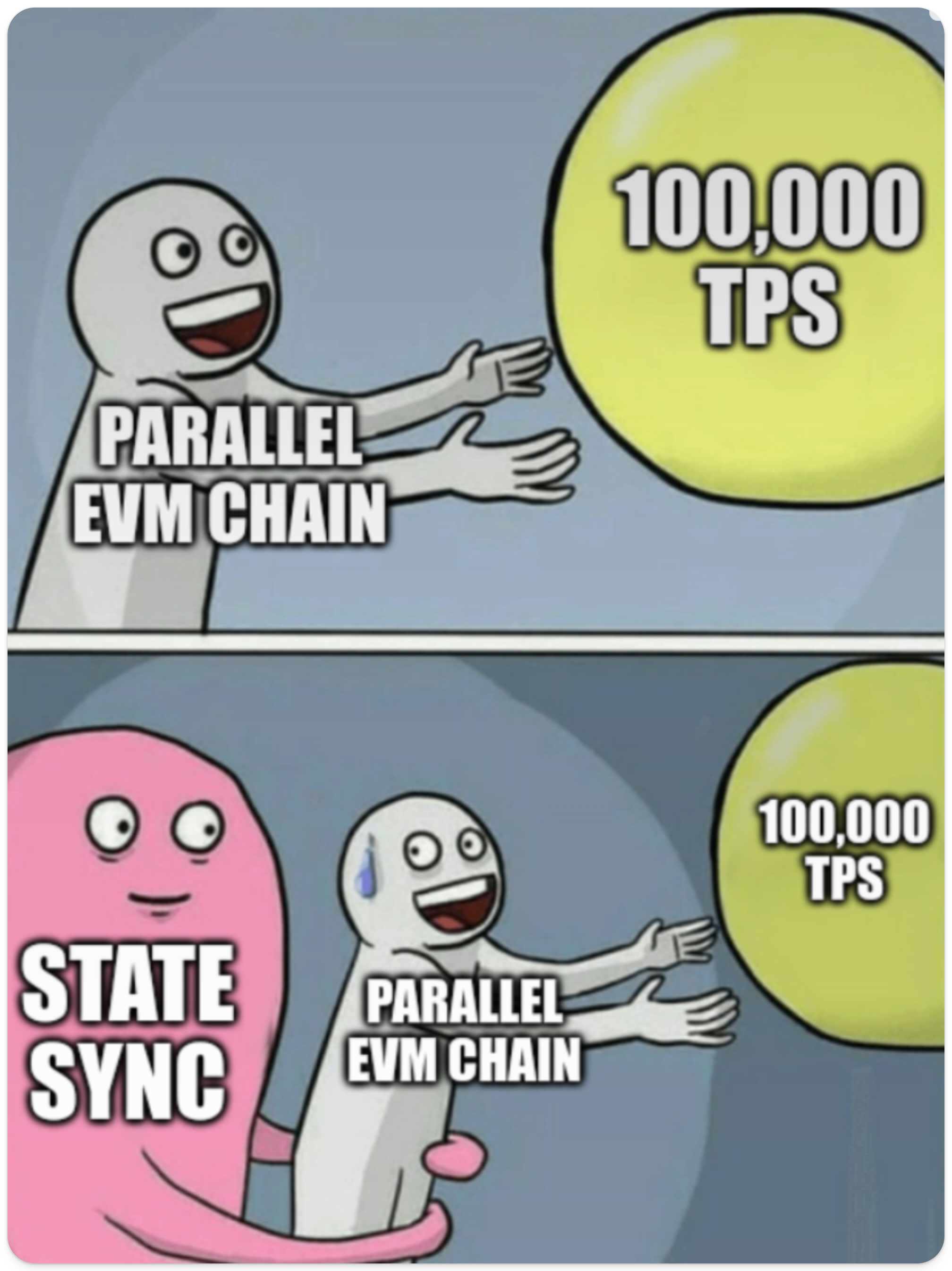The Promise of MegaETH’s Real-Time Revolution

MegaETH's soulbound NFT community fundraise for Fluffles has quickly become the hottest ticket in Crypto Twitter since yesterday's kickoff, but the much-hyped Vitalik-backed L2 already had plenty of buzz building in recent months after banking both a $20 million venture raise and an oversubscribed $10 million round on the Echo community fundraising platform.
While its community-centric funding approach comes as a positive spin on the classic venture-backed model, MegaETH’s main selling point is delivering millisecond-level block confirmations without compromising security, achieving what it dubs as a “real-time” blockchain — an onchain experience that feels just like using a traditional web2 server.
Let's take a look at what's under the hood of MegaETH and what early builders are doing with all that speed 👇
What's Under the Hood of MegaETH?
MegaETH's core development team, MegaLabs, has had to push the boundaries on a number of aspects of blockchain R&D to arrive at where MegaETH purports to go. The project relies on a specialized node setup, optimized block production, and other holistic performance upgrades to build a next-generation system. What does all of that actually mean? Let’s take a closer look.
🧱 Specialized Nodes
MegaETH uses four different node types, with varying hardware requirements, to create fast, efficient block production. First, a single sequencer rapidly organizes transactions and produces new blocks every 1–10 milliseconds, so confirmations feel near instant. Replica nodes receive only the results of those transactions, making their job lighter and allowing them to run on simpler hardware. Full nodes re-check every transaction to provide people with strong security guarantees. Meanwhile, prover nodes handle cryptographic proofs behind the scenes so the main network can keep running quickly, unburdened by the work needed to complete these.
⏱️ Optimized Blocks
As mentioned, MegaETH targets block times in milliseconds. Further, though, it adjusts how many transactions fit in each block based on how quickly the network’s different nodes can work. It also charges extra fees for actions that update the network’s state more heavily, which helps avoid slowdowns during peak usage — an issue that often plagues other EVM-based blockchains. By combining ultra-fast blocks, flexible gas management, and a two-step finality approach (where Ethereum confirms everything in the background), MegaETH can theoretically stay reliable and efficient even under heavy demand.
🏎️ Full Performance Boost
MegaETH doesn’t just speed up one part of the EVM; it overhauls everything. The chain hands off large data tasks to EigenDA, allowing the single sequencer to focus on staying fast instead of navigating storage constraints. It also uses methods like parallel indexing to manage tens of thousands of transactions per second. While many blockchains run into trouble if they optimize one piece but ignore others, leading to delays in syncing data or confirming transactions, MegaETH aims to keep the entire process real-time, an ambitious task traders will soon be able to judge for themselves in testnet.
🧊 State Improvements

Finally, MegaETH novelly organizes data to process transactions at these high speeds. It keeps key information in memory instead of on slower disk storage, letting it read or write data almost instantly. After each batch of transactions, the sequencer sends only the changes (rather than the full transaction history) to other nodes, so they don’t have to redo all the work themselves. MegaETH also improves how it records account balances and other network details, avoiding the slowdowns that commonly occur when blockchains update their data structures too often. Altogether, this allows MegaETH to shoot for 100K transactions per second while still producing blocks every few milliseconds.
5️⃣ Five Projects Building on MegaETH
While the speed MegaETH aims for would smooth over and augment the experience of using the crypto apps we are already familiar with, it also aims to open up a new realm of design space for applications that require immediate, scalable onchain interactions. Below are five upcoming projects on MegaETH that showcase the chain's strengths.
🥰 Euphoria
Euphoria intends to reimagine derivatives trading as something fun, social, and accessible.
Instead of forcing people to learn complicated finance tools, Euphoria introduces “Tap Trading,” where users make predictions on price movements with a quick tap, presenting everything through a game-like user interface designed for mobile. The experience intends to be inherently social and gamified, with features like a chat, point systems, and rewards that can turn trading into a friendly competition. With MegaETH’s speedy finality, Euphoria can provide real-time price updates, immediate payouts, and a fun, efficiency-driven atmosphere reminiscent of social media platforms like TikTok.
We’re coming out of stealth–and it’s time to get euphoric. ✨
— Euphoria (@Euphoria_fi) January 13, 2025
For too long, trading has been designed to feel serious, complex, and stressful. But it doesn’t have to be.
Today, that changes.
Introducing Euphoria - where trading becomes an experience. 🧵 👇 pic.twitter.com/QqlSVfRKsA
🎮 Sweep
Sweep transforms livestream entertainment into an interactive experience where viewers can make real-time predictions on streamers and live events.
Whether it be betting on who will “win a map” or how many kills a streamer may get, the platform supports instant live predictions that let users place and resolve bets within moments, heightening engagement across live broadcasts. Due to the speed of gaming, swift settlement is required to facilitate these predictions. This is where MegaETH’s millisecond-measured block times come in, improving on the current Web 2 rails, which power Sweep at the moment. Keep track of Sweep’s development here.
The future of entertainment isn’t just about watching — it’s about living every moment.
— Sweep (@trysweep) January 9, 2025
This is why we are building Sweep, a way to win money by making real-time predictions on your favorite streamers and live events. Instead of passively watching streams, you become part of the… pic.twitter.com/Y3ExSbMVCe
📢 Noise
Noise looks to capture and trade the value of attention by creating real-time markets for trending topics.
Rather than dealing with traditional supply and demand dynamics, Noise intends to use continuous data streams to show whether a trend is gaining or losing popularity. While little has been shared outside of their original post, these trends will likely go beyond just crypto narratives to real life, potentially letting you go long short on energy drinks, for example. By focusing on what the world cares about most, Noise hopes to reinvent how culture is discovered, shared, and rewarded — shifting us from “paying attention to getting paid for it.” You can sign up for their waitlist here.
Crypto’s unintended use case has always been capturing the value of attention.
— Noise (@noise_xyz) December 3, 2024
The only currency that truly matters is how we spend our time.
Introducing Noise: the platform for trading trends. pic.twitter.com/MouAIh7O2i
🍋 Lemonade
Lemonade looks to create a comprehensive community platform for event management, token utilities, and AI-driven automations, providing organizers with a single terminal to orchestrate all phases of a community’s life cycle.
By allowing event planners to tokenize check-ins, tickets, or other loyalty features with a simple no-code tool, Lemonade hopes to make it easier than ever to reward or engage participants. Further, to manage outreach, the platform brings AI agents into the mix to automate tasks like marketing, logistics, or event coordination. To learn more about Lemonade, you can sign up here, potentially qualifying for early community incentives as well.
Lemonade redefines how creators and communities interact, enabling fully onchain Lemonade Stands on MegaETH- Lemonade redefines how creators and communities connect, offering an all-in-one platform for your shop, events, and community hubs. pic.twitter.com/939bx68oz0
— Lemonade (@lemonade_events) January 29, 2025
🥳 Pump Party
Pump Party looks to bring crypto to a mainstream audience through a live, interactive gameshow that blends large prize pools, mobile gaming, and social engagement.
Drawing from popular phenomena like Mr. Beast’s big giveaway videos, Pump Party looks to target mass appeal, welcoming those outside the crypto sphere to jump in and compete for major prizes in real time. Players will be able to chat, stream, and participate simultaneously, making each game a shared community event. The entire structure focuses on entertainment first while using crypto rails simply to power things behind the scenes, like payouts, fairly and immediately. If you’re interested, you can join their waitlist here.
The average person knows nothing about crypto.
— Pump Party (@pumppartyapp) December 10, 2024
We exist in a small bubble compared to the broader population.
Introducing Pump Party: The first application designed to put crypto in the hands of millions of new people. pic.twitter.com/Z0WaFa7AoJ
Coming Soon
MegaETH’s vision of a “real-time” blockchain looks to hold promise for the future of Ethereum while potentially unlocking a new area of design space for crypto's builders.
By leaning on specialized nodes, smart gas tuning, and memory-based state solutions, the chain’s overhauled EVM brings an exciting upgrade to the dominant execution environment for crypto, hopefully enabling blockchain experiences to exist on par with modern web services. Further, MegaETH's community focus, with the Echo raise and Fluffle mint, offers a fresh take on the tired, exclusively VC-backed model, setting MegaETH up with a broader base of supporters from the get-go.
The chain's novel approach to its launch and design appears to be influencing the projects it has been attracting early-on, with early builders heavily skewed toward both SocialFi and DeFi. A diverse early bench of apps hints at an eventful future public testnet launch for MegaETH, one early supporters hope will also prove to inject new capital and some much-needed better vibes into the Ethereum ecosystem overall.